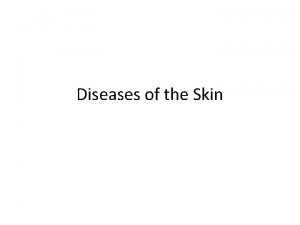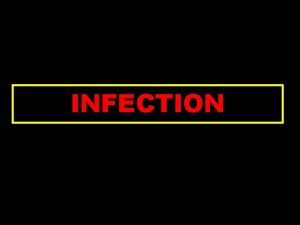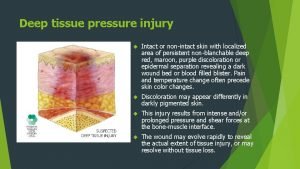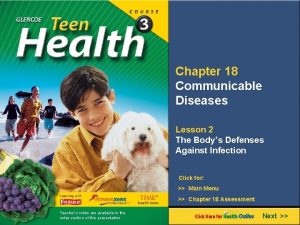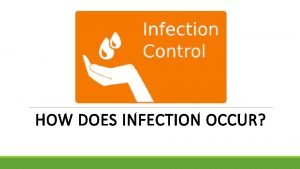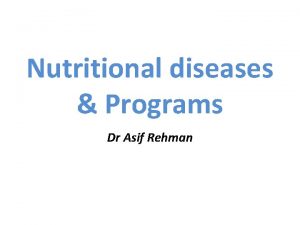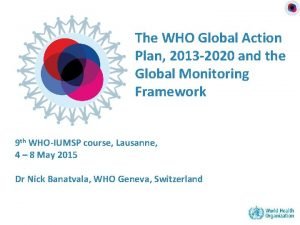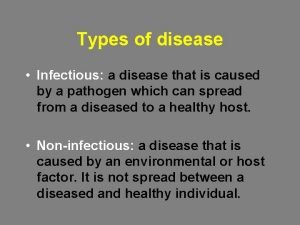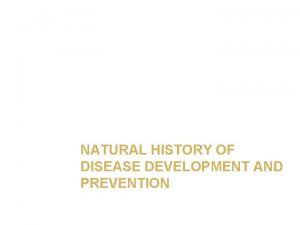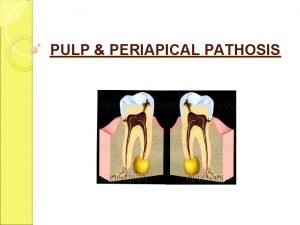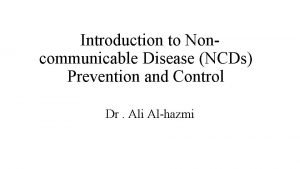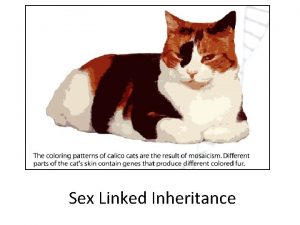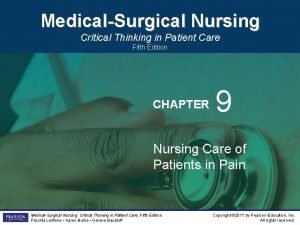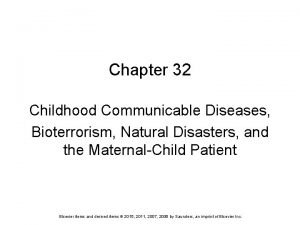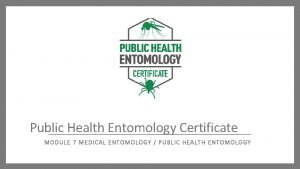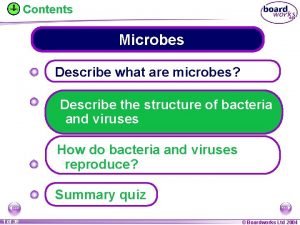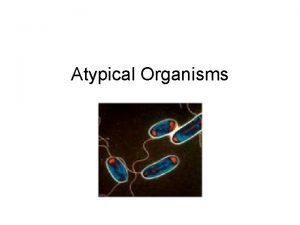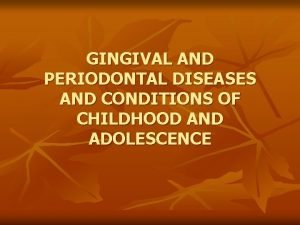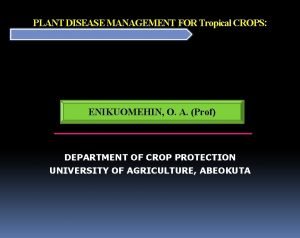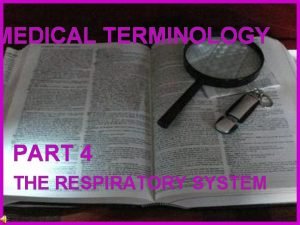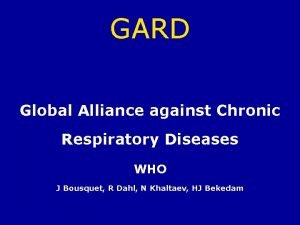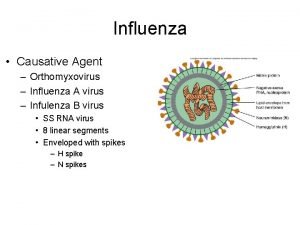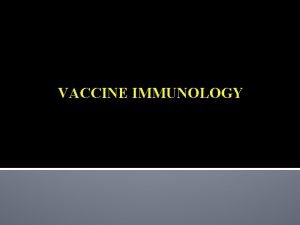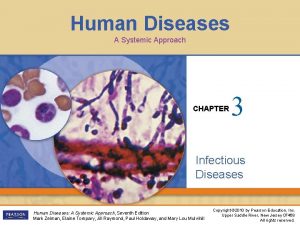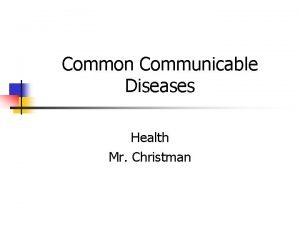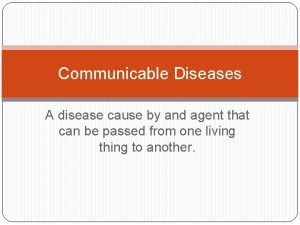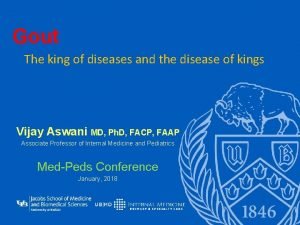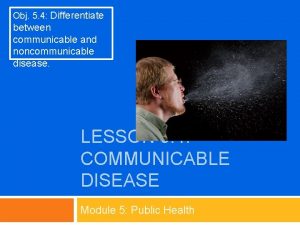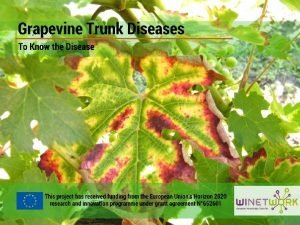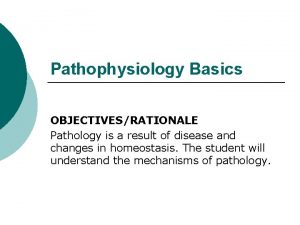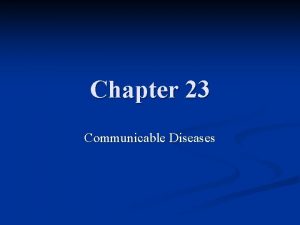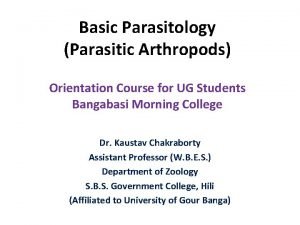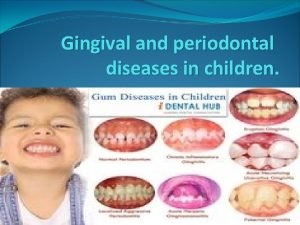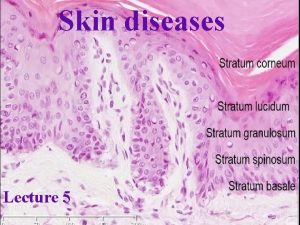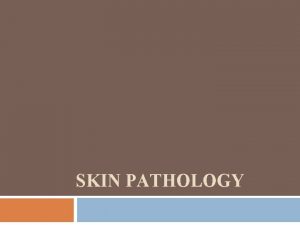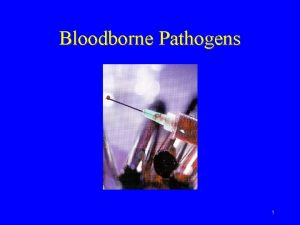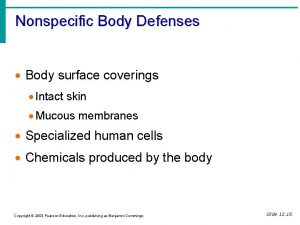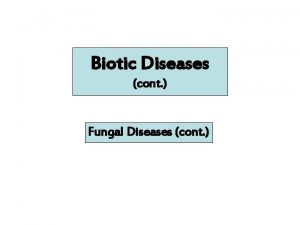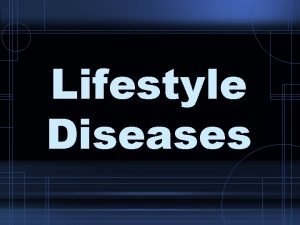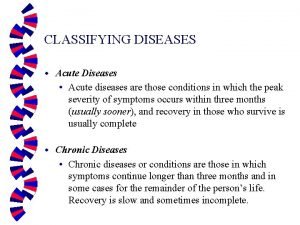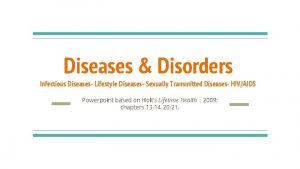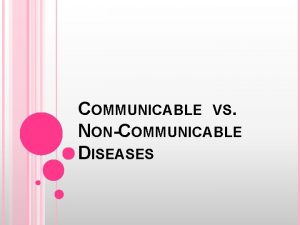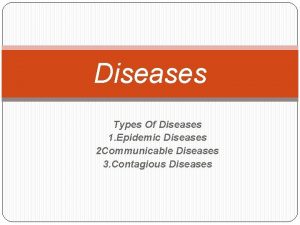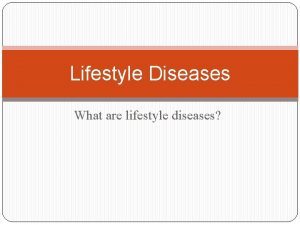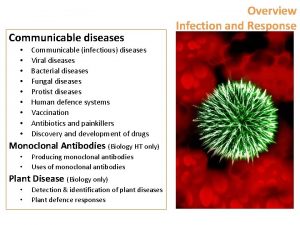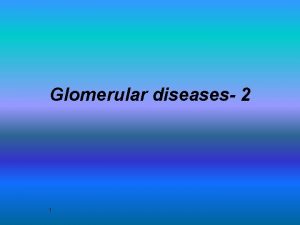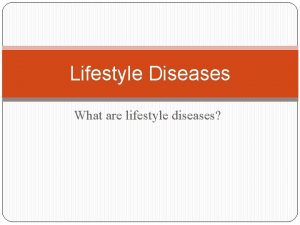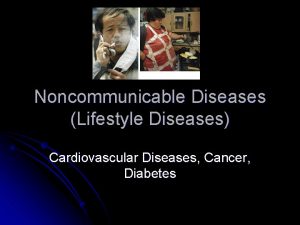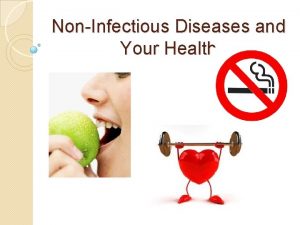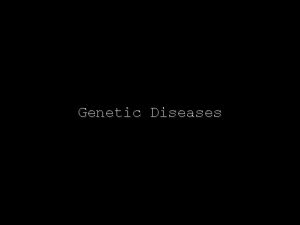Diseases of the Skin Skin Healthy intact skin





























































































































- Slides: 125

Diseases of the Skin

Skin • Healthy, intact skin keeps microbes out of the body • Sebum, sweat effect bacteria • Skin cells are keratinized • Dead skin cells are a food source for some bacteria • Microbes like it warm and moist

Normal skin bacteria • Staphylococcus G+ • Micrococcus G+ • Propionibacterium G+

Bacterial Skin Infections

Acne • Propionibacterium acnes (primarily) • Many different types – Anaerobic – Uses sebum as food source – Affects 85% of teens – Many causes: hormones, stress, sweat, genetics – Not transmissible

Impetigo Staphylococcus aureus (children) Streptococcus pyogenes (adults) • Thin walled vesicles rupture and crust • Always carry risk of infection in the blood or below epidermis

Scalded Skin Syndrome • Staphylococcus aureus • Produces an endotoxin that causes the skin to peel off • Frequently a complication of Staphylococcus infection

Toxic Shock Syndrome • Staphylococcus aureus • “Sunburn” rash • Toxin causes capillaries to become permeable, causing a life threatening drop in blood pressure • Originally liked to highly absorbent tampons in the 1980’s

Nectotizing Fascitiis • Streptococcus aureus • When a bacterial infection spreads deeper into the skin. • Mortality is 40% • Hyperbaric chamber, surgical removal

Dermatitis • Pseudomonas • Found in soil, water • Rash associated with swimming pools, hot tubs, saunas • Nosocomial • Also causes Otitis media

Viral Skin Infections

Chicken pox • Varicella virus • Highly contagious • Mild childhood disease, 95% of population has been exposed, 100 deaths per year • Spread through the respiratory droplet • Vaccine since 1995 (live, attenuated)

Shingles Another manifestation of chicken pox Virus is latent in the dorsal root ganglion Reactivated by stress, low immune system capability Virus moves along peripheral nerves (unilateral) where it causes blister rash • Communicable – can cause chicken pox in persons that have not had the disease • •

Smallpox • Variola virus • 80% of the population had disease during the middle ages • Transmitted by respiratory droplet • First human disease to be eradicated

Reyes Syndrome • Occasional, severe complication of a viral infection • A few days after original infection – vomiting, brain dysfunction, coma, death • Associated with aspirin

Cold sores • Herpes simplex virus, type 1 (HSV-1) • Provocative stimuli include fever, UV radiation, stress or mechanical injury • Prodromal stage • The virus is reactivated and migrates to the surface where it causes lesions • Spread by direct contact, droplet transmission

Warts • Human papillomavirus • • Plantar warts – painful, deep, feet Common/seed warts – painless, flat, fingers Flat warts – smooth, develop everywhere Genital warts – common STD • Wart is not contagious but the virus can be passed to another individual

Rubeola (measles virus) Big red disease, 7 - day measles • Transmitted by respiratory droplet • Macular rash • Incubation is 2 -3 weeks so subject is infectious before the rash is visible • Lesions in the mouth called Koplik’s Spots – red spots with white centers

Rubella 3 -day, German Measles, Little red measles • Milder measles disease • Humans are the only reservoir • Causes severe birth defects if infected in first 3 months • MMR vaccine

Fungal Skin Infections

Tinea • • • Tinea capsis, ringworm Tinea cruris, jock itch Tinea pedis, athlete’s foot Tinea unguinum, nail fungus Tinea versicolor, a skin rash

Candida albicans • Candidiasis or thrush • Vaginal infection • Found anywhere there is damp skin, normally suppressed by local flora (bacteria)

Parasites of the Skin

Eyebrow mite • Dermodex follicularum • Lives in the eyebrows and eyelashes

Head lice • Insect • Predominantly found in Anglo hair • Very contagious, direct or indirect

Scabies • Insect • Burrow into the skin and cause intense itching • Very contagious, direct or indirect


Diseases of the Nervous System

Nervous System Structure • Central Nervous system – Brain – Spinal cord • Peripheral Nervous system – Nerves

Diseases of the eye • Conjunctivitis – Inflammation of the conjunctiva or Pinkeye – Haemophilus influenzae, Adenovirus – Contact lenses • Gonorrheal ophthalmia – Neisseria gonorrhoeae – Silver nitrate, antibiotics • Trachoma – Chlamydia trachomatis – Can lead to permanent scarring, blindness

Bacterial Nervous Disease

Meningitis • Can be caused by virus (most common), fungus, protozoa, bacteria (most deadly) • Microbe enters through lungs

Meningitis • Normal throat bacterial inhabitants • Haemophilus influenzae – Also causes pneumonia, otitis media, epiglottitis – Hib vaccine • Neisseria meningitidis – Meningitis vaccine for military, college populations • Streptococcus pneumoniae – Leading cause of bacterial meningitis – New vaccine also decreases the amount of otitis media

Tetanus • Clostridium tetani – Obligate anaerobe, endospore forming, G+ – Produces tetanospasmin (neurotoxin) blocks the relaxation pathway of muscles – Jaw (lockjaw), back muscles, respiratory muscles • Neonatal Tetanus – Most often the result of infected umbilical stump where the site has been covered with mud.

Botulism • Obligate anaerobe, endospore forming, G+ • Neurotoxin produced by Clostridium botulinum blocks release of acetylcholine • Occurs most often in home-canned foods • Also called the ‘sausage disease’ • Infant Botulism or Floppy Baby Syndrome – Often transmitted by contaminated honey

Viral Nervous Disease

Poliomyelitis • Seen in areas with poor sanitary conditions • Caused by the polio virus, transmitted by ingestion of contaminated water – Multiplies in throat, tonsils, viremia – Enters the CNS, affects the motor nerve cells where it replicates and kills the nerves, causing paralysis • Causes paralysis of the motor nerves less than 1% of the cases

Timeline • 1908 virus discovered • 1938 March of dimes • 1955 Salk IPV clinical trials, 90% effective – Killed virus • 1957 Sabin OPV, tested abroad – Attenuated virus – Licensed in 1962 and became preferred vaccine as it has higher effectiveness – Virus can back-mutate and spread the disease • 1970 Return to Salk using Salk vaccine • 1978 New, improved vaccine

Rabies • A specific type of encephalitis • uninique bullet shaped virus • Almost always fatal • Uniquely long incubation period – Localizes in muscle, connective tissues – Travels slowly along peripheral nerves to CNS • 90% cases caused by skunk, raccoon, bat, fox

• Vaccination after a bite is determined by presence of rabies in the area – A series of antirabies vaccine + immune globulin antibodies – 5 to 6 injections over 28 days • Pre-exposure vaccine available

Encephalitis • Arbovirus • Chills, headache, fever, mental confusion, coma, death can occur • • Eastern Equine Encephalitis Western Equine Encephalitis St. Louis encephalitis West Nile virus


Circulatory & Lymph Diseases

Circulatory System • Blood – Formed elements, plasma • Vessels, capillaries and heart • Lymph system

Hemolysis • β-hemolysis on blood agar is a clear window • α-hemolysis on blood agar is green • Hemolysis – bacteria use the RBC’s for iron • Transferrins bind extra iron in the bloodstream • Staphalycoccus aureus

Terminology • Septicemia • Lymphangitits • G+ sepsis • G- sepsis

Bacterial Circulatory Disease

Gangrene • Clostridium perfringes – anaerobic, produces toxins • Blood supply to tissue is interrupted causing ischemia (anaerobic wound condition). • Leads to tissue death or necrosis • Hyperbaric chamber, amputation

Rheumatic Fever • Streptococcus pyogenes • Causes arthritis-like joint inflammation, possible heart valve damage

Rocky Mountain Spotted Fever • Rickettsia rickettsi • Passed by tick vector • Characteristic rash on body, soles of feet and hands • Prevalent in Southeastern and Southern USA, not in Rocky Mountains

Lyme Disease • Borrelia burgdorfei - a spirochete • Vector is a tick, reservoir is field mouse • First identified in 1975 in Lyme county, Connecticut • Diagnosed as rheumatoid arthritis • Seasonal occurrence • Bulls eye rash, flulike symptoms

Viral Cardiovascular Disease

Epstein Barr Virus • Mononucleosis, Burkett’s Lymphoma, Chronic Fatigue Syndrome • Virus replicates in salivary glands • Spread by droplet • Causes Lyphocytes with unusual nuclei to proliferate • In the US infection happens more frequently in young adulthood

Parasitic Cardiovascular Disease

Malaria • Plasmodium, a parasite with four separate species – Plasmodium falciparum is the most dangerous • Anopheles mosquito (female) – vector • Associated with Sickle Cell Anemia


Epidemiology • Prevalent in tropical and subtropical climates • 2 million victims yearly, mostly children • Medications are less effective, parasite is resistant

Swimmer’s Itch • A form of dermatitis caused by an allergic reaction to a parasite picked up in a freshwater swimming area. • Parasite is normally a snail parasite, carried by domestic waterfowl • Short term infection, itchy


Respiratory Disease

Diseases of the Respiratory System • Separated into upper and lower respiratory diseases

Normal Microbiota • Upper – many potentially pathogenic microbes • Lower – sterile • Pharyngitis, laryngitis, tonsillitis, sinusitis, epiglottitis

Bacterial Respiratory Disease

Strep Throat • Streptococcus pyogenes • Inflammation, fever, tonsillitis, swollen lymph glands, otitis media – Penicillin is drug of choice

Scarlet Fever • Streptococcus pyogenes, which causes strep throat can also develop into Scarlet fever – Toxin is result of bacteriophage incorporating information into the bacterial chromosome – Causes red skin rash, swollen spotted tongue

Pertussis or Whooping cough • Bordatella pertussis • Attach to ciliated cells in trachea, Produces toxins which destroy ciliary escalator movement and violent coughing

Pneumonia • Bacterial, viral, protozoan, fungi, etc. – Lobar, bronchial, pleural • Streptococcus pneumoniae – typical bacterial pneumonia – Alveoli fill with RBC, WBC, fluid – can enter blood stream and spread – Vaccine is made from 23 different types of pneumonia capsules

• • • Mycoplasmal pneumonia, walking pneumonia Legionnaire’s disease Pneumocystis pneumonia Viral pneumonia Respiratory Syncytial virus (RSV)

Otitis media • Occurs frequently in children under 2 years because the Eustachian tube is shorter. • S. pneumoniae causes the majority of these middle ear infections • Can easily progress to meningitis • Vaccine is available – Older vaccine made of 23 capsular antigens suggested for older adults – Newer conjugate vaccine for infants

Tuberculosis • Mycobacterium tuberculosis • 20 hour generation time • Often resistant to antimicrobial disinfectants and antiseptics • TB test, chest x-ray

Tuberculin sensitivity Testing • Used to screen school children, healthcare workers, public employees. • A positive reaction is reliable evidence that the individual has been exposed or has had TB. • An individual with a positive reaction will be asked to have a chest x ray.

Diphtheria • Corynebacterium diphtheriae • G+, endospore-forming, rod – Sore throat, fever, malaise – Tough grayish membrane forms at back of throat – Can produce exotoxin when lysogenized by bacteriophage, toxin interferes with protein synthesis and often causes death • transduction

Viral Respiratory Disease

Common Cold • Rhino virus, +110 types, Corona virus • Accumulate immunity for each type • Can be caused by a single virus

Influenza • Influenza virus A, B, C (A can cause pandemics) – Also cause influenza in pigs, horses, mammals, birds • Spikes mutate year to year – No single vaccine works, usually a combination of at least three • 1918 – 1919 Single highest demographic shock of human race in 6 months

Fungal Respiratory Disease

Histoplasmosis or Ohio Valley Fever • Histoplasma capsulatum • An important disease around as long as man has practiced agriculture • Dimorphic • Endemic on all continents except Australia • Moist soils high in nitrogen, especially where bird/bat guano • 500, 000 cases/year and only few deaths, mostly adult males

Infection and Pathogenesis • Inhalation of spores into the depths of the lung, spores establish infection that is asymptomatic. • Aches, pains, coughing, fever, night sweats, weight loss • Most serious forms occur in patients that are immunocompromised


Digestive Disease

Anatomy • Gastrointestinal tract – one long tube through the body – mouth, pharynx, esophagus, stomach, small and large intestine – All produce large amounts of mucous • Accessory structures - teeth, tongue, salivary glands, liver, gall bladder, pancreas

Microbial Inhabitants • Mouth has millions of bacteria in each m. L. of saliva • Stomach, small interesting – acidic p. H – few microbes • Large intestine – millions of bacteria, mostly anaerobic or facultative

Bacterial Digestive Disease

Tooth Decay • Dental Caries • Teeth are hard and do not shed surface cells so bacteria can attach easily • Oral bacteria convert sucrose to fructose (lactic acid which attacks the enamel surface) and glucose (dextrose which is sticky) • Streptococcus mutans • Lactobacillus • Bacteria do not adhere to clean teeth

• One of the most common infections today • If unattended can cause abscesses • Scarce before the 17 th century • Disease started with the introduction of table sugar (sucrose) • Sugar alcohols in sugarless gum are preventative

Gum Disease • Periodontal disease – inflammation and degeneration of the structures that support the teeth • Characterized by bleeding gums • Gingivitis

Food Contamination • Infection – pathogen enters the GI tract and multiplies. – Characterized by delay • Intoxication – ingestion of toxins from bacteria – Characterized by sudden appearance of symptoms • Dysentery – diarrhea and blood in the stool

Food Contamination Staphalococcus aureus Enterotoxin Normally inhabits the nasal passages Can grow in things prepared in advance and not kept chilled • Toxin not destroyed when food is reheated • •

Food Contamination • • • Shigella Produces shiga toxin – destroys mucosal tissue Severe diarrhea, “Travelers Diarrhea” Oral fecal route of contamination Found in vegetables fertilized with human waste

Food Contamination • Salmonella • Normal inhabitant of the human, animal intestinal tract • Can pass through the mucosa into lymph and cardiovascular systems, can affect many organs • Poultry, eggs, pets

Food Contamination • E. coli • Generally regarded as a lab pet • Pathogenic forms have special fimbrae that allow them to bind to cells • Produces enterotoxin which causes watery diarrhea • Found in cattle intestines, can be spread to meat

Ulcers • Helicobacter pylori • Peptic ulcer disease – bacteria discovered as a cause in 1982 • p. H in stomach is 2. 0, cells have a protective layer to prevent inflammation • Bacteria disrupts this layer, allowing damage to the tissue • Connection to type ) blood?

Viral Digestive Disease

Hepatitis • Inflammation of the liver • Caused by 5 different viruses: A, B, C, D, E

Hepatitis A • Transmitted by the oral fecal route • Greatest danger is before symptoms are visible so food handlers can infect others before they know they have the disease • Inactive virus vaccine available called gamma globulins

Hepatitis B • • Transmitted through blood or sexually Difficult to differentiate between A and B Vaccine available (grown in yeast) 90% cure rate, 10% chronic carrier

Hepatitis C • Identified in 1960 • Transmitted by blood • Aprox. 70 days between infection and detection • Called the Silent Epidemic, killing more in the US than AIDS • High % develop cirrhosis of the liver, liver cancer • α Interferon

Parasitic Digestive Disease

Roundworm • Ascaris lumbricoides • Eggs ingested - hatch into larvae in the small intestine - burrow to lung or throat where are swallowed - move to the small intestine where they mature and lay eggs - passed through feces and ingested by another host

Tapeworm • Consumption of undercooked beef, pork, fish • Adult beef tapeworm can live 25 years and grow to 6 m. in length in human intestines • Eggs are released with feces, stick to the grass and are eaten by animals. • Larvae lodge in muscle and are eaten by humans. • Few symptoms – bloating, belching

Pinworms • Enterobius • Female migrates out the anus at night to lay eggs • Severe anal itching • Entire households can become infested

Hookworms • Attaches to the intestinal wall and feeds on blood and tissues • Requires bare skin contact to spread • Wearing shoes has stopped the spread.

Trichinosis • Small roundworm • Transmitted by eating raw meat, especially pork or other animals that eat garbage • Larvae encyst in animal muscle – cyst wall is digested in stomach – larvae invade tissue and move to eye muscle, diaphragm


Diseases of the Urinary and Reproductive Systems

Anatomy • Urethra – bladder – ureter – kidneys • 30 separate STD’s • Most can be prevented with condom use • Viral diseases have no cure

• Female – Urethra conveys only urine – Opening between ovary and uterine tube – Urethra is short and close to the rectum – Bacterial population is influenced by hormone levels – Sores that are indicative of disease often appear only on the cervix

• Male – Urethra conveys urine and sperm – Infection is often more visible

Fungal Diseases

Candidiasis • Candida albicans – yeast • Opportunistic infection • NGU in males • Candidiasis in females

Viral Reproductive Disease

Genital Herpes • Herpes Simplex Virus 2 (HSV-2) • Incubation 1 wk. , burning sensation and vesicles, painful walking and urination • Disease can be transmitted without the presence of vesicles • HERPES IS FOREVER • Condoms do not protect you against Herpes • Causes serious fetal damage

Genital Warts • Human Papilloma virus • Greatest danger is connection to cancer

Bacterial Urinary, Reproductive Disease

Urinary Tract Infection • Almost always bacterial • E. coli, Stpahyalococcus • Why? ? • • • Dystitis Urethritis Polynepritis Dysuria Pyruia

Non-Gonococcal Urethritis • A general term for any inflammation of the urethra not caused by Neisseria gonorrheaeae • Chlamydia trachomatis - most prevalent STD in the US • Symptoms – Male – epididymis inflammation, mild – Female – asymptomatic, leads to PID

Pelvic Inflammatory Disease • General term for an extensive bacterial infection of the female pelvic organs • Causes pain, infertility • 60% of patients with PID have three or more episodes

Syphilis • Treponema palladium – the teflon pathogen • Lacks enzymes to build complex molecules that the bacteria needs to survive outside the host • Three stages

• Stage 1 – Initial hard based sore called a chancre – Fluid is highly infectious – Not seen in female because it is on the cervix

• Stage 2 – Characterized by a skin rash, widely distributed – Lesions are contagious – Disease now enters latent period where there are no symptoms – Congenital syphilis – transmitted across the placenta resulting in severe fetal damage

• Stage 3 – Less than 50% of cases reach this stage – Lesions or gummas form on affected organs – Not usually harmful but it depends on the location of the lesion. Can cause tissue death

Gonorrhea • Neisseria gonorrhoeae • “flow of semen” • Bacteria attaches to the epithelial cell walls via fimbrae • Inflammatory reaction of the body results in WBC’s moving to the site, pus forms • One exposure results in the disease 35% in males, 90% in females

Male Symptoms • Painful urination, discharge • Scarred urethra if ignored • Sterility results if infection reaches the testes or when ductus is blocked • Most often identified antibiotics are given

Female Symptoms • • Females unaware of the infection Cervix is infected Pain from PID (later) Can become systemic – meningitis, eye infection, gonorrheal arthritis

Caution • Can be acquired by any sort of sexual contact • Antibiotic resistance is increasing • Coinfections are frequent • The bacteria cannot live outside the human body
 Healthy intact skin
Healthy intact skin Chapter 8 skin disorders and diseases
Chapter 8 skin disorders and diseases Elsevier
Elsevier Milady chapter 8 skin disorders and diseases
Milady chapter 8 skin disorders and diseases Intact dentition
Intact dentition Non intact
Non intact Patella fracture mechanism of injury
Patella fracture mechanism of injury Reality testing ability
Reality testing ability Healthy nurse healthy nation
Healthy nurse healthy nation Healthy food healthy mind journal
Healthy food healthy mind journal Healthy soil healthy life poster ideas
Healthy soil healthy life poster ideas Healthy forests healthy communities poster ideas
Healthy forests healthy communities poster ideas Facial steps milady
Facial steps milady Thick skin and thin skin
Thick skin and thin skin Thin skin vs thick skin
Thin skin vs thick skin Hình ảnh bộ gõ cơ thể búng tay
Hình ảnh bộ gõ cơ thể búng tay Khi nào hổ con có thể sống độc lập
Khi nào hổ con có thể sống độc lập điện thế nghỉ
điện thế nghỉ Dot
Dot Thế nào là sự mỏi cơ
Thế nào là sự mỏi cơ Trời xanh đây là của chúng ta thể thơ
Trời xanh đây là của chúng ta thể thơ Voi kéo gỗ như thế nào
Voi kéo gỗ như thế nào Thiếu nhi thế giới liên hoan
Thiếu nhi thế giới liên hoan Vẽ hình chiếu vuông góc của vật thể sau
Vẽ hình chiếu vuông góc của vật thể sau Một số thể thơ truyền thống
Một số thể thơ truyền thống Thế nào là hệ số cao nhất
Thế nào là hệ số cao nhất Slidetodoc
Slidetodoc Hệ hô hấp
Hệ hô hấp Tư thế ngồi viết
Tư thế ngồi viết Các số nguyên tố
Các số nguyên tố đặc điểm cơ thể của người tối cổ
đặc điểm cơ thể của người tối cổ Mật thư anh em như thể tay chân
Mật thư anh em như thể tay chân Các châu lục và đại dương trên thế giới
Các châu lục và đại dương trên thế giới Tư thế worms-breton
Tư thế worms-breton ưu thế lai là gì
ưu thế lai là gì Thẻ vin
Thẻ vin Bàn tay mà dây bẩn
Bàn tay mà dây bẩn Các châu lục và đại dương trên thế giới
Các châu lục và đại dương trên thế giới Bổ thể
Bổ thể Từ ngữ thể hiện lòng nhân hậu
Từ ngữ thể hiện lòng nhân hậu Tư thế ngồi viết
Tư thế ngồi viết Thế nào là giọng cùng tên
Thế nào là giọng cùng tên Phép trừ bù
Phép trừ bù Thơ thất ngôn tứ tuyệt đường luật
Thơ thất ngôn tứ tuyệt đường luật Bài hát chúa yêu trần thế alleluia
Bài hát chúa yêu trần thế alleluia Sự nuôi và dạy con của hổ
Sự nuôi và dạy con của hổ đại từ thay thế
đại từ thay thế Diễn thế sinh thái là
Diễn thế sinh thái là Vẽ hình chiếu vuông góc của vật thể sau
Vẽ hình chiếu vuông góc của vật thể sau Công của trọng lực
Công của trọng lực Thế nào là mạng điện lắp đặt kiểu nổi
Thế nào là mạng điện lắp đặt kiểu nổi Tỉ lệ cơ thể trẻ em
Tỉ lệ cơ thể trẻ em Lời thề hippocrates
Lời thề hippocrates Vẽ hình chiếu đứng bằng cạnh của vật thể
Vẽ hình chiếu đứng bằng cạnh của vật thể độ dài liên kết
độ dài liên kết Quá trình desamine hóa có thể tạo ra
Quá trình desamine hóa có thể tạo ra Môn thể thao bắt đầu bằng chữ đua
Môn thể thao bắt đầu bằng chữ đua Certain infectious and parasitic diseases
Certain infectious and parasitic diseases Chapter 23 lesson 1 understanding communicable diseases
Chapter 23 lesson 1 understanding communicable diseases Types of pathogens
Types of pathogens Nutritional diseases
Nutritional diseases Albugo eye
Albugo eye Chapter 22 genetics and genetically linked diseases
Chapter 22 genetics and genetically linked diseases Chapter 15 nervous system diseases and disorders
Chapter 15 nervous system diseases and disorders Non communicable diseases infographic
Non communicable diseases infographic Chapter 24 lesson 1 sexually transmitted diseases
Chapter 24 lesson 1 sexually transmitted diseases Different types of diseases
Different types of diseases Explain natural history of disease
Explain natural history of disease Pulp pathosis
Pulp pathosis Periradicular diseases
Periradicular diseases Non communicable diseases
Non communicable diseases Diseases spread by columbian exchange
Diseases spread by columbian exchange Myths and fallacies about non communicable diseases
Myths and fallacies about non communicable diseases X linked diseases
X linked diseases Pain area chart
Pain area chart Chapter 32 childhood communicable diseases bioterrorism
Chapter 32 childhood communicable diseases bioterrorism Public health entomology certificate
Public health entomology certificate Iceberg phenomenon definition
Iceberg phenomenon definition Microbes
Microbes Chlamydia trachomatis
Chlamydia trachomatis Nursing management of reproductive tract infection
Nursing management of reproductive tract infection Nutritional diseases
Nutritional diseases Gingival diseases
Gingival diseases Milady chapter 10 nail disorders and diseases
Milady chapter 10 nail disorders and diseases Conclusion of plant diseases
Conclusion of plant diseases Sperm fructose
Sperm fructose Periradicular tissues
Periradicular tissues Sphyx medical term
Sphyx medical term Quality gurus and their contribution
Quality gurus and their contribution Lifestyle modern
Lifestyle modern Sti std
Sti std Global alliance against chronic respiratory diseases
Global alliance against chronic respiratory diseases Columbian exchange restaurant names
Columbian exchange restaurant names Influenza a causative agent
Influenza a causative agent Perianal pruritus
Perianal pruritus Chapter 24 sexually transmitted diseases and hiv/aids
Chapter 24 sexually transmitted diseases and hiv/aids Chapter 21 mental health diseases and disorders
Chapter 21 mental health diseases and disorders Tronsmo plant pathology and plant diseases download
Tronsmo plant pathology and plant diseases download Diseases with vaccines
Diseases with vaccines Human diseases a systemic approach
Human diseases a systemic approach Non common communicable diseases
Non common communicable diseases Examples of communicable diseases
Examples of communicable diseases King of diseases
King of diseases Epidemiological triad
Epidemiological triad 10 diseases of lymphatic system
10 diseases of lymphatic system Difference between communicable and noncommunicable
Difference between communicable and noncommunicable Immunocompromised diseases list
Immunocompromised diseases list Venn diagram of communicable and non-communicable diseases
Venn diagram of communicable and non-communicable diseases Section 19-3 diseases caused by bacteria and viruses
Section 19-3 diseases caused by bacteria and viruses Grapevine trunk diseases
Grapevine trunk diseases Protein deficiency diseases
Protein deficiency diseases Major nutritional deficiency diseases in emergencies
Major nutritional deficiency diseases in emergencies What causes genetic diseases
What causes genetic diseases Waterwashed diseases
Waterwashed diseases What are deficiency
What are deficiency Hyperglyceremia
Hyperglyceremia Tronsmo plant pathology and plant diseases download
Tronsmo plant pathology and plant diseases download Sarophytes
Sarophytes Chapter 17 reproductive system diseases and disorders
Chapter 17 reproductive system diseases and disorders Diseases in civil war
Diseases in civil war Is hemophilia communicable or noncommunicable
Is hemophilia communicable or noncommunicable Diseases caused by dust
Diseases caused by dust Cardiovascular system diseases and disorders chapter 8
Cardiovascular system diseases and disorders chapter 8 Polysaprobic
Polysaprobic Retrocuspid papilla interdental clefts in primary teeth
Retrocuspid papilla interdental clefts in primary teeth 10 nail diseases and disorders
10 nail diseases and disorders
